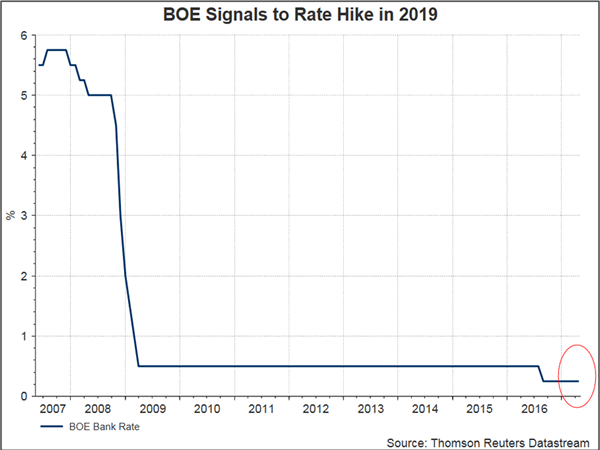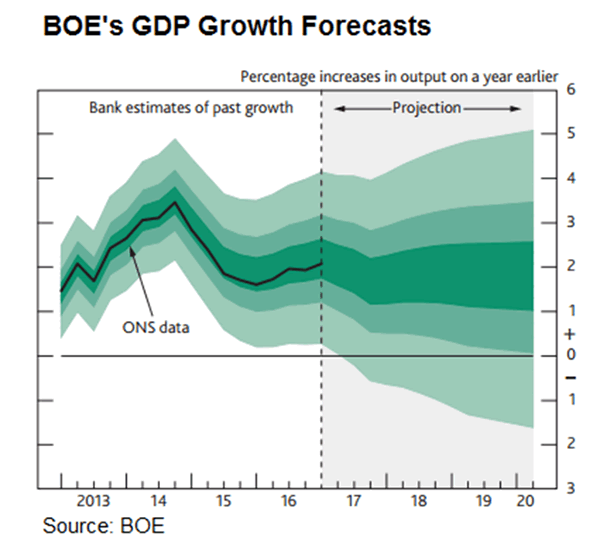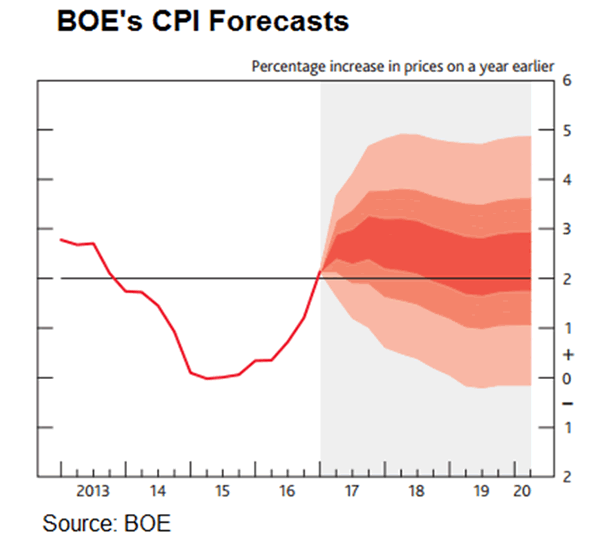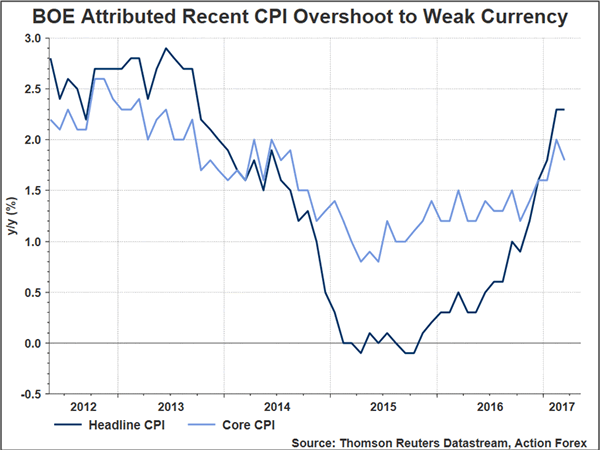BOE left the Bank rate unchanged at 0.25% and the QE program at 435B pound. While this had been widely anticipated, BOE’s downgrade of GDP growth outlook was disappointing. Policymakers also raised its inflation forecast for this year, warning that rising inflation begins to hurt consumers, but lowered the forecasts for 2018 and 2019. Expectations of a "smooth" Brexit led members to believe that interest rate may need to go up around the time the UK leaves the EU in 2019.
The market viewed the downgrade of GDP growth this year and inflation outlook in 2018 and 2019 as dovish. We were a bit surprised by the 7-1 vote (Kristin Forbes the only dissenter) to maintain the monetary policy status quo. We had expected a more divided committee with one more member joining the rate hike camp.

Consumption growth will be slower in the near term
On the economic outlook, BOE revised lower its GDP growth forecast to +1.9% for this year, from +2% projected in February. It also anticipated that 1Q17 growth would be revised lower to +0.4% q/q.. Yet, GDP growth was revised higher to +1.7% (February: +1.6) for 2018 and to +1.8% (February: +1.7%) for 2019. The quarterly Inflation Report suggested that "consumption growth will be slower in the near term than previously anticipated before recovering in the latter part of the forecast period as real income picks up". The central bank projected wage to grow +3.5% and +3.75% in 2018 and 2019, respeictlvely. As suggested in the statement, "with unemployment falling to its estimated equilibrium rate, wage growth is expected to recover significantly, and the drag from domestic costs to lessen, over the same period".

2018, 2019 CPI forecast revised lower
On inflation, BOE revised higher its CPI forecast to +2.7% from 2.4% for 2017, probably driven by the fall in market rate from February. Inflation forecasts for 2018 and 2019 were, however, revised down to 2.4% (from +2.6%) and to +2.2% (from +2.4%), respectively. Exceeding BOE’s target, headline CPI rose to +2.3% in February and steadied at that level in March.

The central bank attributed this phenomenon to sterling’s weakness, noting that "the projected overshoot (of the inflation target) entirely reflects the effects of the falls in sterling since late November 2015 on import prices".

Projections hinged on a "smooth" Brexit
The central bank’s projections hinged on a "smooth" Brexit prospect. As noted in the statement, the "latest projections there is such a trade-off through most of the forecast period, with a degree of spare capacity and inflation remaining above the 2% target. In the final year of the forecast, however, the output gap closes and inflation rises slightly further above the target. This is conditioned on the assumptions that the adjustment to the United Kingdom’s new relationship with the European Union is smooth, and that Bank Rate follows the market-implied path for interest rates".
The BOE has not modeled for a disorderly Brexit. Yet, it stressed that monetary policy would not "prevent either the necessary real adjustments as the U.K. moves towards its new international trading arrangements or the weaker real income growth that’s likely to accompany that adjustment over the next few years".











